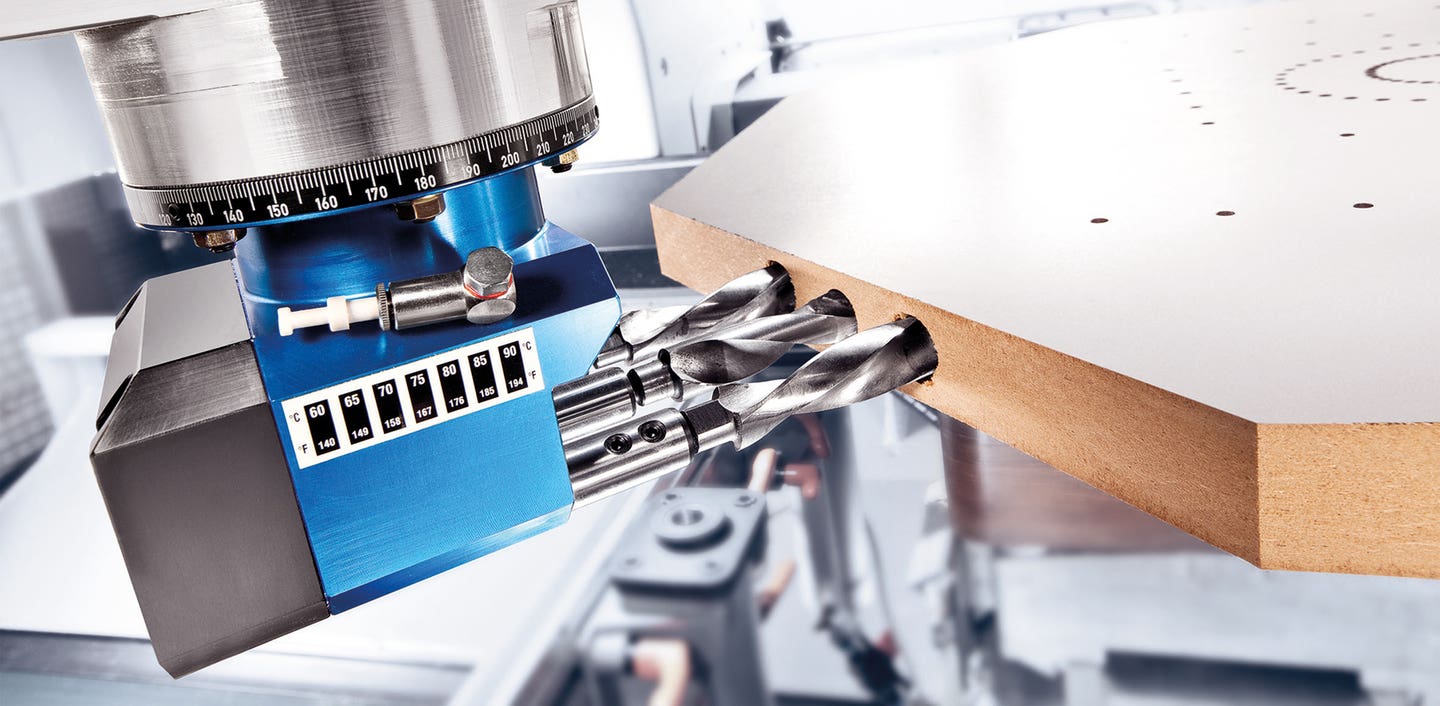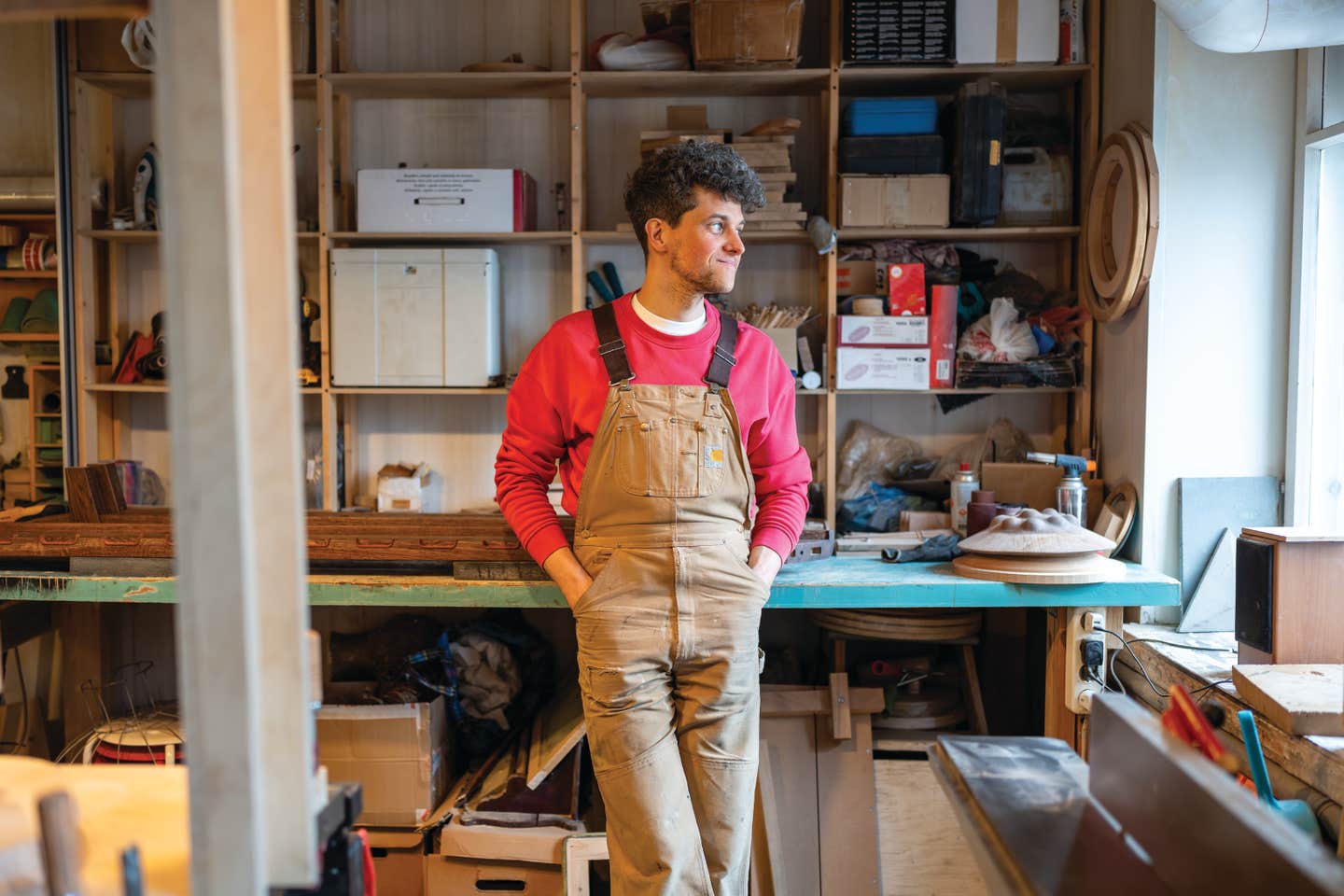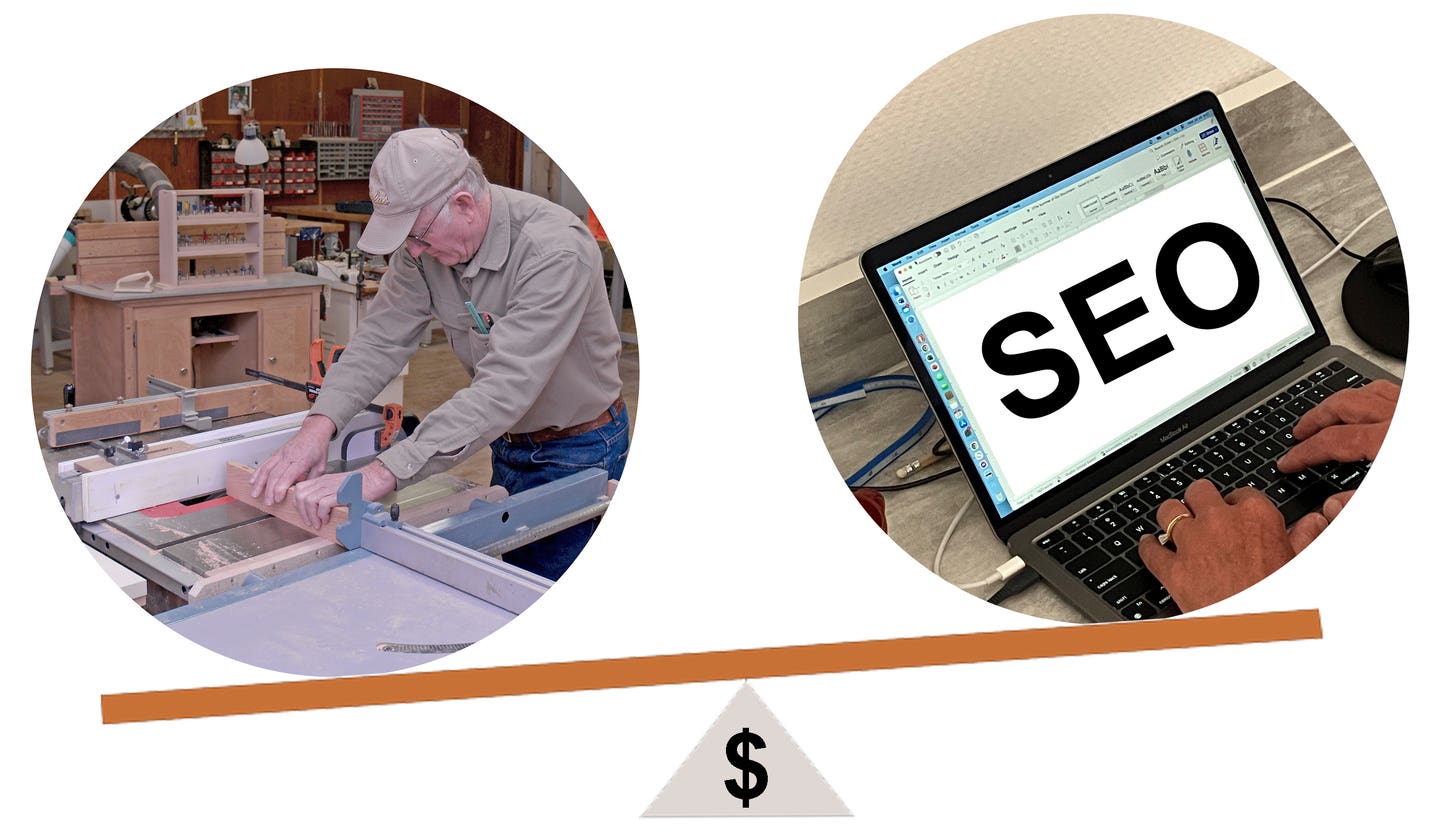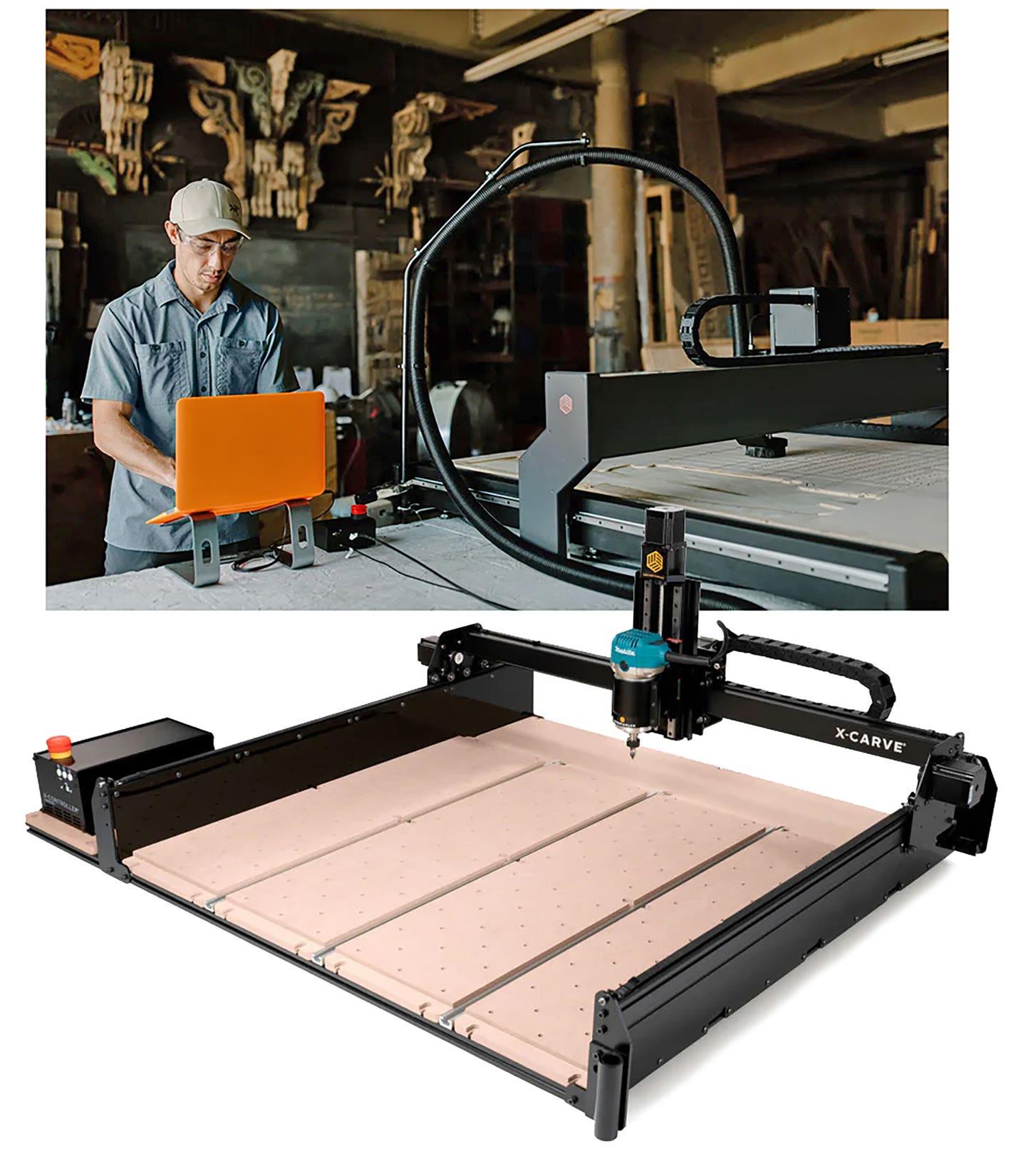Lasers can change the landscape
A laser engraver in the woodshop is both a creative and a productive tool. With it, a shop can produce original art or duplicate something of a commercial nature. The…
A laser engraver in the woodshop is both a creative and a productive tool. With it, a shop can produce original art or duplicate something of a commercial nature. The learning curve is such that an imaginative employee with good intuitive skills can very quickly master both processes.
So a shop could potentially meet new needs for commercial clients - for example, gracing each teller's station in a bank lobby with the corporate logo - or enhance custom furniture and casework with original art, such as panels depicting wildlife or other themes. Even photographs can be engraved onto solid wood or veneered panels, adding a very personal aspect to custom cabinetry.
Laser engravers are not prohibitively expensive, but they are a sizeable investment. Justifying their cost involves taking a look at both how they might work with existing products and also how they might introduce new products. It also means taking a look at the demographics of both current and potential clients. If a shop primarily works for high-end residential customers, the applications of laser engraving are a lot different than they would be for a company dealing mostly with architectural millwork or other corporate clients. Some of the entry-level engravers are priced so competitively that they can pay for themselves in just a couple of jobs. But if the work promises to be repetitive, it's a good idea to have a serious conversation about the various models with one or more distributors.
Engraving with a laser is burning wood with a beam of light. Because the beam is so tightly focused, a laser can create very intricate designs. The laser can be programmed to barely touch the surface - as in burning through a veneer to reveal the substrate - or if it's powerful enough, it can cut all the way through a piece of stock. Some substrates burn better than others, leaving a dark background that enhances the tone, color and grain of the veneer.
What's required
Laser engraving requires two main components. A computer (not included) is used to design, scan or record a design and to format it as a series of commands. There are several software options available and the programs are easy to use. There are even programs for specific tasks. For example, Universal Laser Systems in Scottsdale, Ariz., has developed 1-Touch Laser Photo, which a shop can use to quickly laser-image photos without having to learn any third-party photo editing software (such as Photoshop). The program automatically applies special filters to the image that will adjust contrast and definition that are appropriate to the material being processed.
Once the computer has done its job, an image is then delivered to the actual engraving machine. These are almost always configured with a static table and a mobile cutting head. In other words, the laser moves but not the wood.
Machines are categorized in two ways: the size of the largest workpiece that they will handle and the power of the light beam, which has a lot to do with the overall speed of the process. These two categories are symbiotic: more powerful beams are used for larger work. Hence, most companies offer a range of machines.
"Good examples of the models best suited to woodshops," says Amy Dallman of Epilog Laser, "are either our Helix or Legend 36 EXT. The Helix can handle most cabinet doors with a work area of 18" by 24" and a 75-watt laser. The Legend has a larger bed (24" by 36") and it goes up to 120 watts, so it has more speed and cutting power for larger projects." Epilog, based in Golden, Colo., has been building laser engravers for more than two decades.
The LG-900, a similar model from Jamieson Laser in Litchfield, Conn., also comes with a large 24" by 36" work area. According to Jamieson's Wolfgang Kesselring, "it has a table with 15" vertical travel and is equipped with either a 60- or 100-watt laser. In general, customers appreciate the flexibility of these machines and the great variety of jobs which can be done. That's especially important when every one of their customers walks through the door with a different need."
All of these machines deliver a very clean, concise edge. And once the machine has been programmed and is burning wood, the operator is usually free to go back to the shop and do some woodworking.
Just like a CNC router, the cutterhead - perhaps more properly named the burning head? - moves in an X-Y pattern to burn the design on the surface of the wood and the beam of light is so dense that it literally vaporizes wood cells. There's no sawdust. In general, the wood is finished with lacquer before the design is burned. There is some cleanup required to remove residue, but laser engraving is a non-contact process in which the tool never actually touches the work, so there are no scratches and touch-ups. And because strong beams can literally cut through materials, there are some efficiencies to consider when deciding what the strength and size of the machine should be. For example, thin materials such as veneers can be cut when they are stacked several deep, which helps to control costs.
Value-added
"A single laser system is versatile to the degree that it will engrave designs into a variety of woods and cut the most intricate of inlays," says Derek Kern, vice president of sales and marketing at Kern Electronics & Lasers in Wadena, Minn. "This versatility can increase your shop's creativity and add value to your work."
And when you want those inlays to stand out, a laser engraver can open the door to a lot of very creative media options, where woodshops can add plastics, fiberglass, acrylic, ceramic tile, solid surface materials, glass, soft metals (such as brass, aluminum and copper), granite or marble tile, foils and even leather accents to furniture and casework in a very customized, personal way.
This is especially true when the pattern used is a photograph or a drawing or image that was created by, or for, the client. Photographs can be black-and-white or color. Usually, the scanned image will need to be fairly high resolution. That's about where images need to be (250 dpi or better) when printing from a computer on inkjet photo papers. White areas of an image are not burned and darker areas are. The most intense and deepest engraving will be in areas of the scanned image that are black. Therefore, a photograph with a lot of dark tones is not a great candidate. Neither is an image with a lot of background, such as people standing in front of several trees.
The species of wood being engraved is an important factor in laser engraving. Shops will have an easier time working in lighter-toned woods such as alder, birch, maple, cherry and red oak than darker species. However, walnut can be quite dramatic when the original image has good contrast and lots of white background.
Another serious contender for woodshop applications is MultiCam's 2000 series laser, which, like most models, will engrave both 2-D and 3-D images, as well as vector cut.
According to Pololu Robotics and Electronics in Las Vegas, which provides laser engraving services, "vector engraving is for etching lines that are the width of the laser beam (around 0.01"). It is just like laser cutting, but the laser does not cut all the way through the material. Vector engraving is limited to line art.
"Raster engraving, on the other hand, is slower and more costly than vector engraving and is used for engraving bitmaps (JPG or GIF files of logos, photos, etc.), text and filled-in areas of a vector drawing. Raster engraving is more flexible; you can engrave thin lines as well as recessed areas. The laser blasts away material one pixel at a time, similar to the printing process used by inkjet printers. Pololu usually raster-engraves at 400 dpi, but we can use lower resolutions and can also use 600-dpi and 1200-dpi settings."
The bottom line on laser engravers is that they are versatile, relatively inexpensive, easy to use and an economical way to add value.
"Woodworkers can enhance the quality and value of their work by adding laser engraving, inlay, 3-D engraving, cabinet customization and more," says Cherie White of Universal Laser Systems. "Increased throughput, repeatability and keeping outsourced work in-house and on time are key benefits that woodworkers can realize by investing in a laser engraving system for their shop."
The setup cost? It will depend on the platform selected (engraving area), laser power, any accessories or options, and whether the use will be on engraving, cutting or both. There are also ancillary items, like an exhaust system, that factor into the overall investment. Expect to pay anywhere from $18,000 to $25,000.
This article originally appeared in the April 2011 issue.







